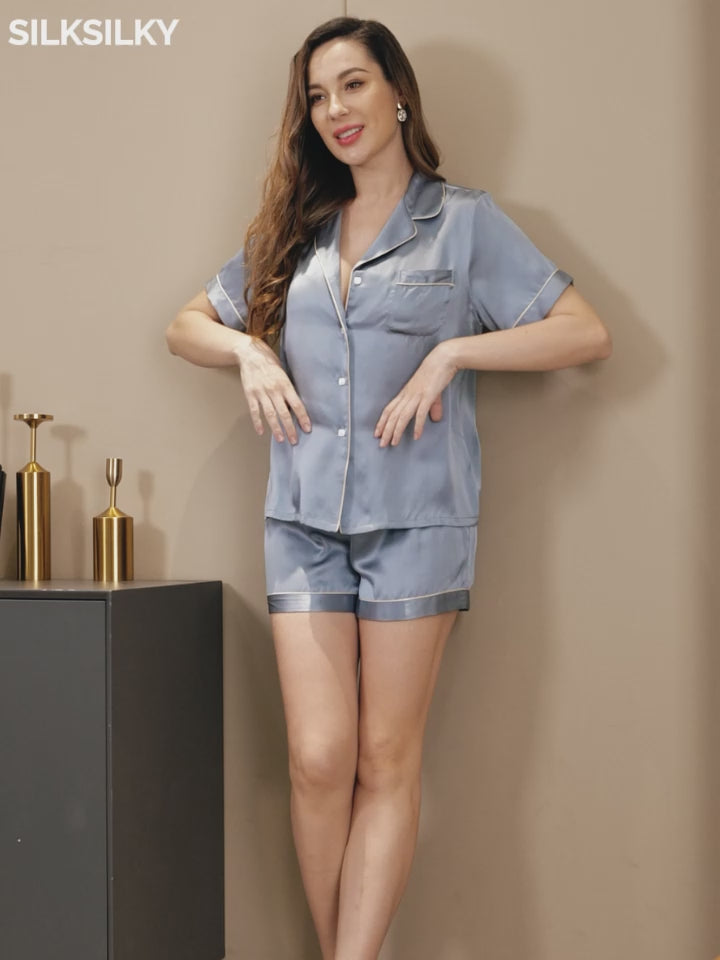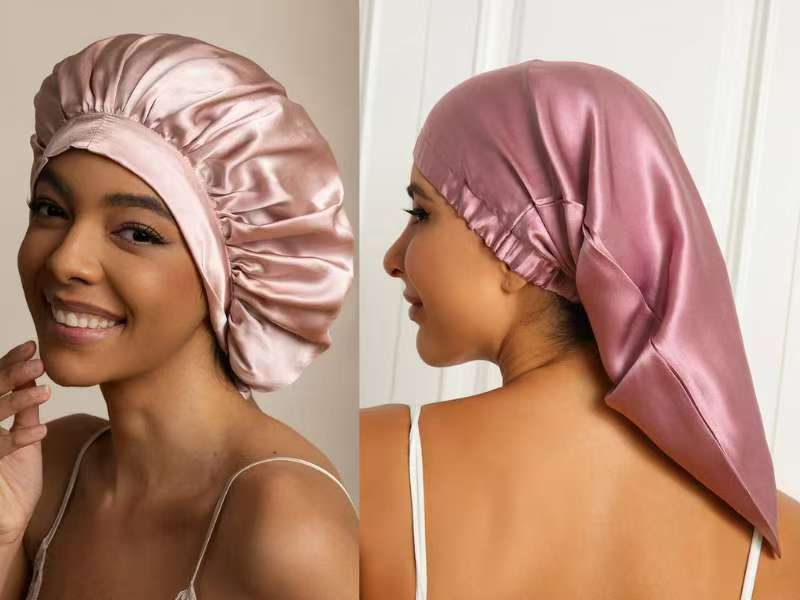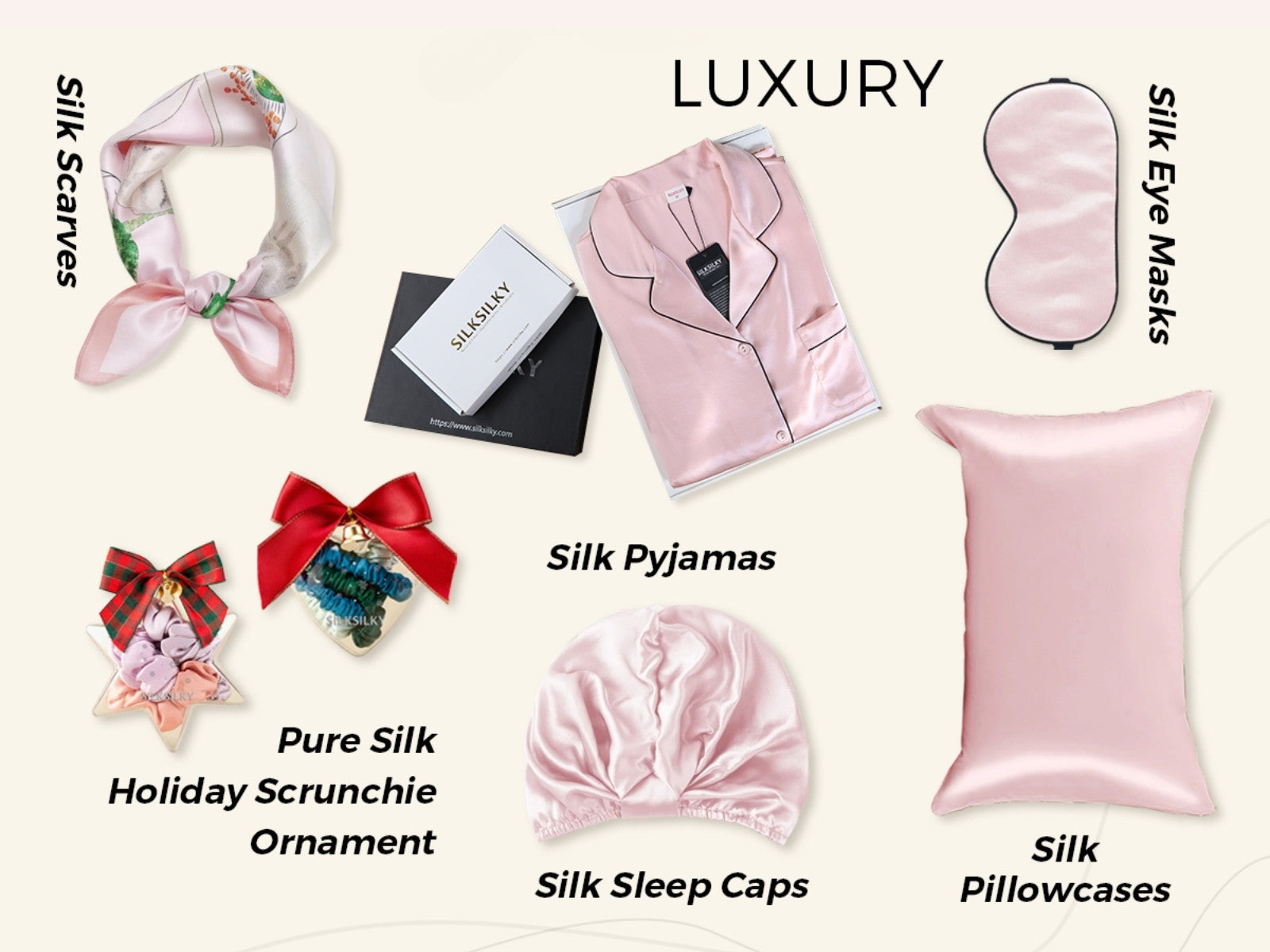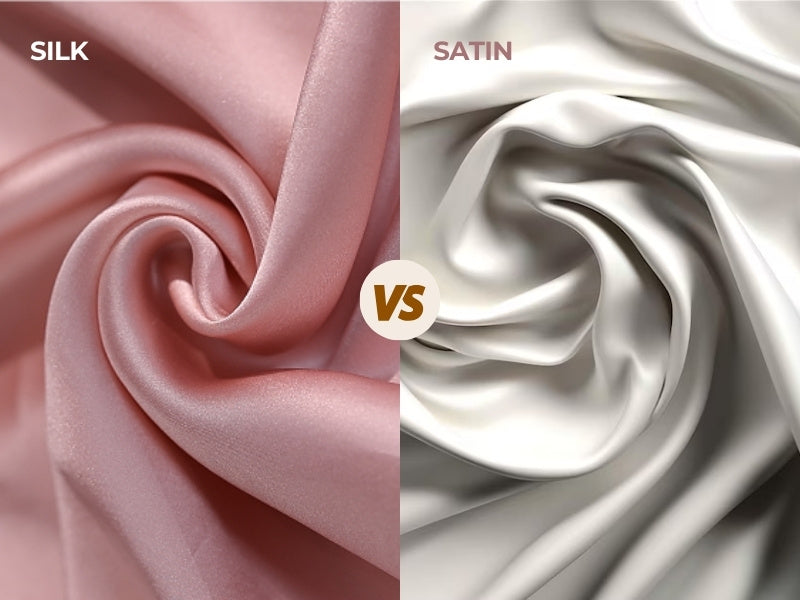How to identify real silk?
Since its first discovery in 3000 BC, silk has been the most sought-after textile in the world. It's an amazing fabric, incredibly strong and versatile with a wide range of benefits and uses. Real silk is high-end and luxurious, and its sheer elegance and quality make it attractive to those who want to make a quality purchase that will last a lifetime. The popularity of silk has attracted many merchants to the market.
The consumer probably doesn't know how to tell if silk bedding or silk sleepwear are genuine. Some companies take advantage of this fact by passing off fake or low-quality silk as real. That's why we've put together this guide to help you recognize real silk. We'll show you how to tell if a fabric is silk, and how to distinguish silk from polyester or other satin fabrics. Read on to learn more about how to recognize real silk and make sure you're only getting pure, real silk sheets, silk pajamas, and silk accessories!

Product Description
This is the first step to make sure you're buying real silk, especially if you're buying online. Read the product description to make sure you're only buying items that are 100 percent pure mulberry silk. You should also look for details in the description, such as the grade of silk and the weight. If you don't see the word momme in the product description, the fabric is probably not silk.
Appearance
The difference between the appearance of real silk and its imitations is unmistakable. The luster of silk simply cannot be imitated and is completely different from any other fabric.
The triangular, prism-like structure of silk fibers, highly prized for their shimmering properties, makes them not only shine, but also reflect light in different ways. This creates a multicolored shine as it refracts light from different angles, creating a variety of colors.
Price
The cost of producing silk is roughly five times higher than that of replicas. The cost of producing fabrics, paying workers, treating and processing fabrics, creating clothing—the list goes on and on. If the price of a silk product is too good to be true, it's most likely a fake. You can't buy a pure silk scarf or tie for US$10.
The Burn Test
You may receive a free silk sample along with your products for the burn test. By gently applying a lighter to the fabric, you can use your sense of smell to distinguish between the scent of burning real silk and burning synthetic textiles. Natural silk burns irregularly, makes ashes, smells like hair. Once the flame is removed, it’ll stop burning. If it just melts and smells like burning plastic, it’s not real silk.
![[Light Blue] SilkSilky Pure Silk Notch Collar Women's Pajamas 001,](http://silksilky.com/cdn/shop/files/ab83afb9301666ee2f174a8ae72ffda4_4e9bb488-7880-40fe-9e69-f0fd823857c5.jpg?v=1764653199&width=1200)
![[Light Blue] SilkSilky Pure Silk Notch Collar Women's Pajamas 002,](http://silksilky.com/cdn/shop/files/db8dbeee5354fe3b631b963715847ffe.jpg?v=1764653202&width=1200)
![[Dark Red] SilkSilky Pure Silk Notch Collar Women's Pajamas 001,](http://silksilky.com/cdn/shop/files/599ed0811e1a5fcfa55bdc80a0279704_2643c850-a793-4475-a52b-7fef1bbd7e36.jpg?v=1762233837&width=1200)
![[Dark Red] SilkSilky Pure Silk Notch Collar Women's Pajamas 002,](http://silksilky.com/cdn/shop/files/9e022d4dd4f99aed4af8da3f58fcfd5b_efb9bafe-3d71-4283-9b81-e339ff08f352.jpg?v=1762233837&width=1200)
![[White] SilkSilky Pure Silk V Neck Nightgown 001,](http://silksilky.com/cdn/shop/files/a8ae95260a57844b1e2e00c4fcfabdcc_b922b270-af10-4e96-9493-0d877bd663db.jpg?v=1764140639&width=1200)
![[White] SilkSilky Pure Silk V Neck Nightgown 002,](http://silksilky.com/cdn/shop/files/24ac506750f8c38c51bb5b6d0ee15287.jpg?v=1764140639&width=1200)
![[Pink] SilkSilky Pure Silk Sleep Cap 001,](http://silksilky.com/cdn/shop/files/SilkSilky_Pure_Silk_Sleep_Cap_Pink_001_C-250529006.jpg?v=1762221980&width=1200)
![[Pink] SilkSilky Pure Silk Sleep Cap 002,](http://silksilky.com/cdn/shop/files/SilkSilky_Pure_Silk_Sleep_Cap_Pink_002_C-250529006.jpg?v=1762221980&width=1200)
![[Steel Blue] SilkSilky Pure Silk Notch Collar Women's Pajamas 001,](http://silksilky.com/cdn/shop/files/05b358f92fb5d252122b00d69a2fcfc5_88211a42-88c4-4448-8cb3-5f18529bfef8.jpg?v=1762237226&width=1200)











